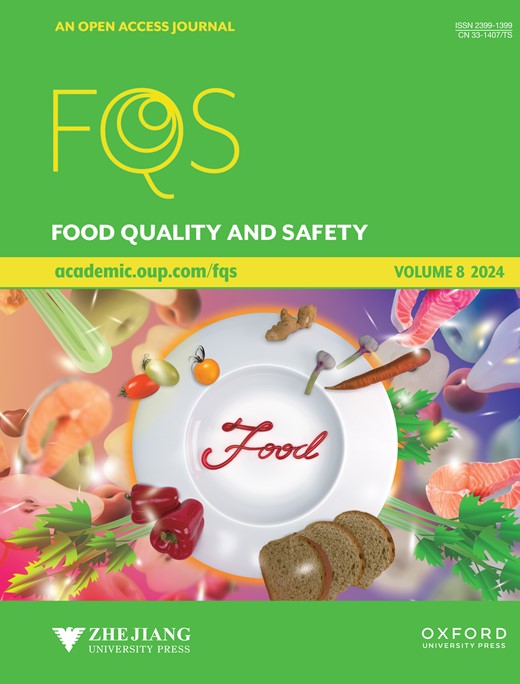The Sources of Bacillus cereus Contamination and their Association with Cereulide Production in Dairy and Cooked Rice Processing Lines
IF 4.4
3区 农林科学
Q2 FOOD SCIENCE & TECHNOLOGY
引用次数: 0
Abstract
Bacillus cereus, a spore-forming bacterium and frequent cause of food poisoning, poses a safety threat to dairy and rice industries due to its high contamination rates and ability to produce toxins like cereulide. Because of widespread presence and thermal resistance of the spores, B. cereus cannot be eliminated from the environment and may survive in processing plants. Survived spores can develop into vegetative cells, leading to a heightened risk of cereulide production in the processing environment. Both spores and vegetative cells have an ability to adhere to the surfaces of dairy plants and form biofilm, serving as the site for cereulide production and accumulation. Therefore, it is crucial for the food industry to address potential sources and pathways of B. cereus contamination and their connections to cereulide production in processing lines. In this review, the sources of contamination of B. cereus, including spores, vegetative cells, and biofilms, and analyzes their potential role in cereulide production at each stage of dairy and cooked rice processing were analyzed. In addition, the controlling methods to prevent B. cereus contamination and cereulide production in the processing lines were proposed, offering valuable insights for improving microbial risk management in the food industry.乳、米加工生产线蜡样芽孢杆菌污染源及其与谷烷生产的关系
蜡样芽孢杆菌是一种孢子形成细菌,是食物中毒的常见原因,由于其高污染率和产生cereulide等毒素的能力,对乳制品和大米行业构成了安全威胁。由于孢子的广泛存在和耐热性,蜡样芽孢杆菌不能从环境中消除,并可能在加工厂中存活。存活下来的孢子可以发育成营养细胞,导致加工环境中产生核素的风险增加。孢子和营养细胞都具有粘附在乳植物表面并形成生物膜的能力,是产生和积累核素的场所。因此,对于食品工业来说,解决蜡样芽孢杆菌污染的潜在来源和途径以及它们与加工生产线上的硫化物生产的联系是至关重要的。本文综述了蜡样芽孢杆菌的污染来源,包括孢子、营养细胞和生物膜,并分析了它们在乳制品和熟食加工各个阶段产生谷烷的潜在作用。此外,还提出了防止蜡样芽孢杆菌污染和加工过程中蜡样芽孢杆菌产生的控制方法,为加强食品工业微生物风险管理提供了有价值的见解。
本文章由计算机程序翻译,如有差异,请以英文原文为准。
求助全文
约1分钟内获得全文
求助全文
来源期刊

Food Quality and Safety
FOOD SCIENCE & TECHNOLOGY-
CiteScore
7.20
自引率
1.80%
发文量
31
审稿时长
5 weeks
期刊介绍:
Food quality and safety are the main targets of investigation in food production. Therefore, reliable paths to detect, identify, quantify, characterize and monitor quality and safety issues occurring in food are of great interest.
Food Quality and Safety is an open access, international, peer-reviewed journal providing a platform to highlight emerging and innovative science and technology in the agro-food field, publishing up-to-date research in the areas of food quality and safety, food nutrition and human health. It promotes food and health equity which will consequently promote public health and combat diseases.
The journal is an effective channel of communication between food scientists, nutritionists, public health professionals, food producers, food marketers, policy makers, governmental and non-governmental agencies, and others concerned with the food safety, nutrition and public health dimensions.
The journal accepts original research articles, review papers, technical reports, case studies, conference reports, and book reviews articles.
 求助内容:
求助内容: 应助结果提醒方式:
应助结果提醒方式:


